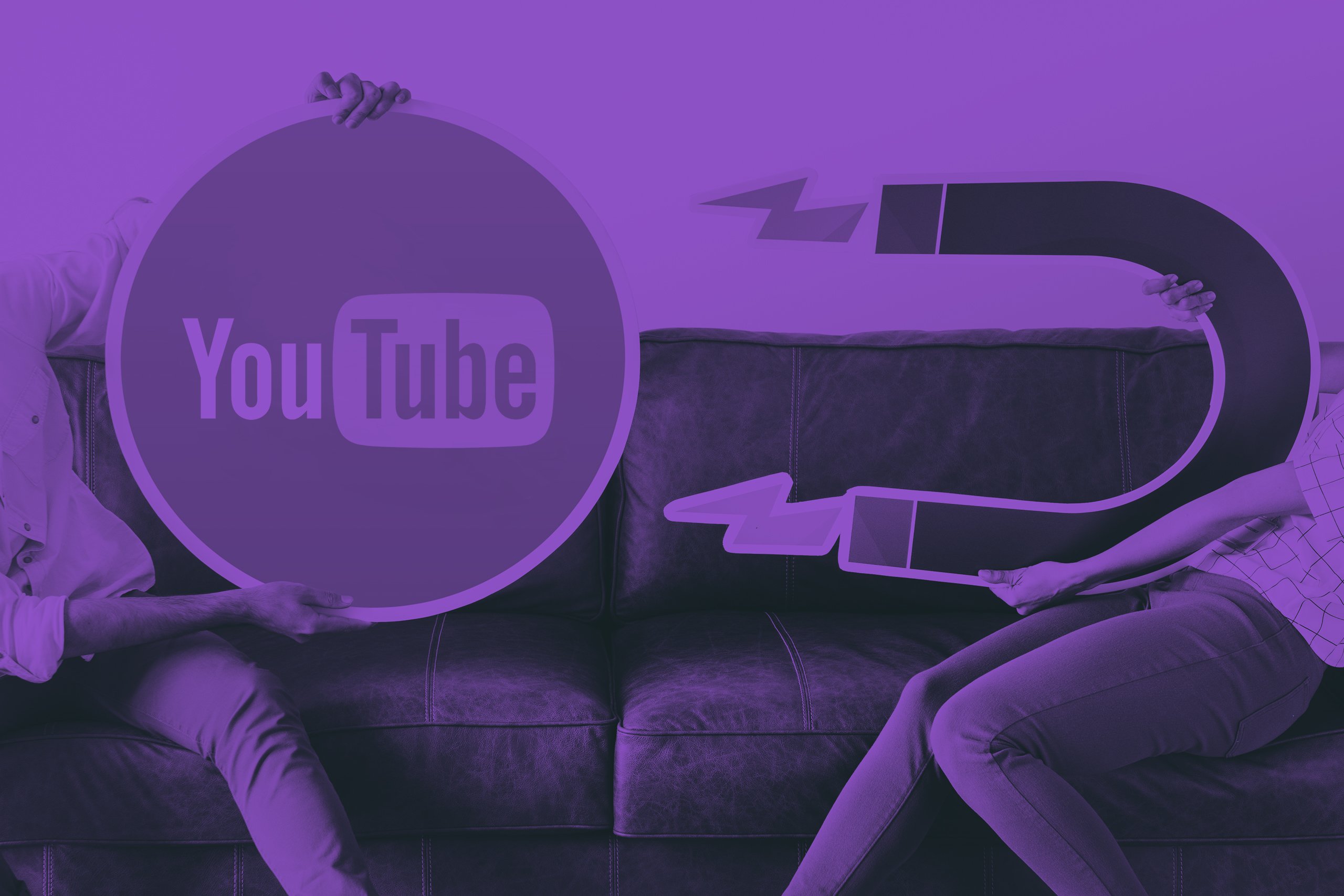Choosing the right YouTube Ads targeting method could be what stands between your campaigns succeeding or, failing.
Since YouTube Ads removed contextual targeting for some of the campaign types, we have seen a big shift into alternative targeting methods.
In this article I will provide some insights into YouTube Ads targeting methods and what can be learned from our experiences here at Yugo Media.
YouTube Ads Targeting: setting the stage
The kernel of targeting is understanding user intent.
Have You ever wondered how You can be sure that your YouTube ads are reaching the right people at the right time or how you can optimize your ad performance and maximize your return on investment? This is every entrepreneur and marketer's dream.
Showing the right ads to the right people, at the right time.
This is why targeting is so important, and must not be overlooked.
Making YouTube Ads Work: Start With Why?
Simon Sinek's book, Start with Why, is a great insight into the importance of purpose. Why are we targeting who we are targeting, and what do we want to communicate to whom we are targeting?
These questions must be answered to unveil some of the science behind the targeting.
To start a video campaign that works, you need to know your purpose. What do you want to say and how do you want to say it? Why do you want to say in the first place? Why are you going after that segment or market?
Make sure your YouTube Ads align with your brand vision. Discover the most effective methods to connect with your target audience.
YouTube is an ideal platform to run video ads and reach your potential customers. With over two billion users, YouTube is one of the largest online video platforms in the world. Hands down getting your targeting right won’t just save you money and time, but it will accelerate your learning curve and set you ahead in your industry and market.
First Steps to Create a Video Campaign on YouTube
Before we jump into targeting methods, let’s ensure you get your account set up and organized.
The first step to getting your Ads on YouTube is to create a video campaign in the Google Ads platform. Google Ads is the online advertising platform that powers YouTube ads, as well as other Google properties and partner sites. To create a video campaign, follow these steps:
- Sign in to your Google Ads account and click on the Campaigns tab.
- Click on the plus button and select New Campaign.
- Choose an objective for your campaign, such as brand awareness, leads, website traffic, or product and brand consideration. Your objective will determine the available ad formats and features for your campaign.
- Select Video as your campaign type and click Continue.
- Name your campaign and choose a bidding strategy. A bidding strategy is how you pay for your ads, such as cost-per-view (CPV), cost-per-thousand-impressions (CPM), or cost-per-action (CPA).
- Set a daily budget for your campaign. This is the maximum amount you are willing to spend per day on your ads.
- Choose the networks and exclusions where you want your ads to appear. You can choose between YouTube search results, YouTube videos, video partners on the display network, or a combination of these options. You can also exclude certain types of content or placements that are not relevant or appropriate for your brand.
YouTube Ads Targeting Starts With Organization
To start analyzing your best targeting options, you need to ensure your account is organized:
Account structure can look something like this:
Campaign #1
- Ad group #1-1
- Ad group #2-1
- Ad group #3-1
Campaign #2
- Ad group #1-2
- Ad group #2-2
- Ad group #3-2
By organizing your Google Ads account with cascading ad groups you can target the specific intent of each audience with a specific ad. By putting all the audiences and ads into one campaign limits your insights and power of a/b testing.
Simple Steps To Set Up Ad Groups and Target Audiences
The next step is to set up ad groups for your video campaign. Ad groups are subsets of your campaign that contain one or more ads and a set of targeting criteria. To set up ad groups, follow these steps:
- Name your ad group and select an ad format. YouTube offers different types of video ads, such as TrueView ads, bumper ads, out-stream ads, and more. Each ad format has its own benefits and requirements, so choose the one that best suits your objective and budget.
- Upload or select a video from your YouTube channel that you want to use as your ad. You can also create a video ad using YouTube’s Video Builder tool, which allows you to create simple and professional-looking videos from images, text, and music.
- Enter a headline, description, call-to-action, and landing page URL for your ad. These elements will appear alongside or below your video ad, depending on the format and placement. Make sure they are clear, concise, and relevant to your offer and audience.
- Set a maximum CPV for your ad group. This is the most you are willing to pay each time someone views or interacts with your ad. Your actual CPV may be lower than your maximum CPV, depending on the competition and the quality of your ad.
- Click Save and continue.
YouTube Ads Targeting Options
The final step is to target your audience for your ad group. Targeting allows you to show your ads to specific groups of people who are likely to be interested in your product or service. To target your audience, follow these steps:
- Choose one or more targeting methods from the following options: demographics, audiences, keywords, topics, placements, or custom intent audiences. Each targeting method lets you refine your audience based on different criteria, such as age, gender, interests, behaviors, search terms, video topics, or specific websites or videos.
- You can also use exclusions to narrow down your audience further by excluding certain criteria that are not relevant or desirable for your campaign.
- Review your estimated reach and performance based on your targeting settings. You can adjust your settings until you are satisfied with your potential reach and CPV.
- Click Save and continue.
The Tips to Optimize Your Video Campaign Performance
Once you have created and launched your video campaign on YouTube, you can monitor and optimize its performance using various tools and metrics in Google Ads. Some of the key metrics to track include:
- Impressions: The number of times your ad was shown to potential viewers.
- Views: The number of times someone watched or interacted with your ad.
- View rate: The percentage of impressions that resulted in views.
- Average CPV: The average amount you paid for each view or interaction.
- Clicks: The number of times someone clicked on your ad or call-to-action button.
- Click-through rate (CTR): The percentage of views that resulted in clicks.
- Conversions: The number of times someone completed a desired action after clicking on your ad, such as signing up, making a purchase, or downloading an app.
- Conversion rate: The percentage of clicks that resulted in conversions.
- Cost-per-conversion: The average amount you paid for each conversion.
You can use these metrics to evaluate how well your video campaign is meeting your objectives and budget and identify areas for improvement. You can also use the following tips to optimize your video campaign performance:
- Test different ad formats, videos, headlines, descriptions, and calls to action to see which ones generate the most views, clicks, and conversions.
- Experiment with different targeting methods and settings to find the most relevant and responsive audience for your ads.
- Adjust your bids and budgets based on the performance and competition of your ad groups and keywords.
- Use remarketing tags to show your ads to people who have already interacted with your YouTube channel, specific landing pages or website, and encourage them to take the next step in your customer journey.
- Use GA-4 to gain insights into your audience’s preferences, behaviors, and feedback on your YouTube channel and videos.
Conclusion
Using video is an excellent method to connect with audiences who tend to ignore text and banner ads. As previously mentioned, marketers are dedicating more resources to video advertising, not necessarily in terms of resources, but certainly in effort and time. Disregarding this trend could result in losing your competitive advantage.
Video Ads can create an emotional connection that can change your whole approach to lead gen, conversion rate optimization, and revenue generation.
Capturing someone's attention with a static display ad relies on a single appealing image or headline. In contrast, video advertising offers various elements that users may find relevant or captivating. You can incorporate a catchy tune, a humorous introduction, an emotional message, or a realistic scenario to pique viewers' interest and motivate them to watch the entire ad.
Furthermore, utilizing video ads provides you with more flexibility to present your product or service as a solution to users' problems, offering something exciting or enhancing their lives. Since many video ads begin playing automatically within the main content, you don't have to rely solely on people clicking on the ad. They are exposed to it while engaging in an activity they choose, such as watching the latest episode of a YouTube star or playing a mobile game. If your ad resonates with them, you can effectively keep them engaged and drive conversions.If you need more help with creating or optimizing your video campaigns on YouTube, you can contact us at. We are a team of experienced and certified YouTube advertising experts who can help you advertise effectively on YouTube. Contact us today for a free consultation.







